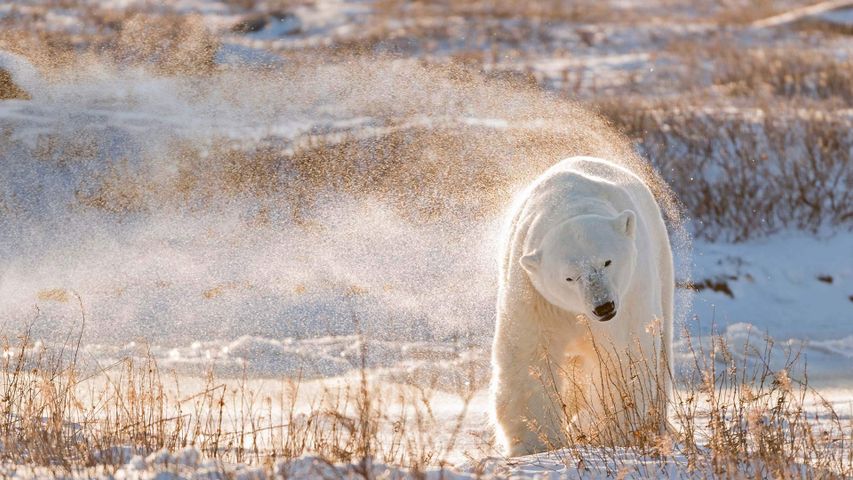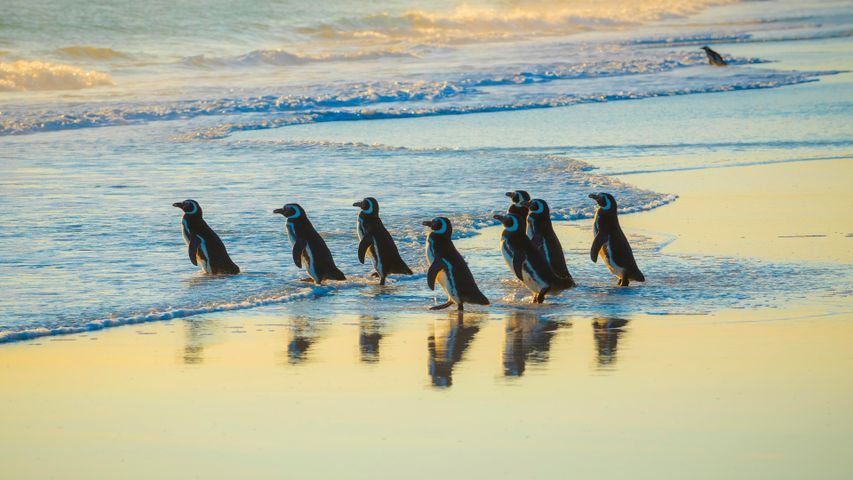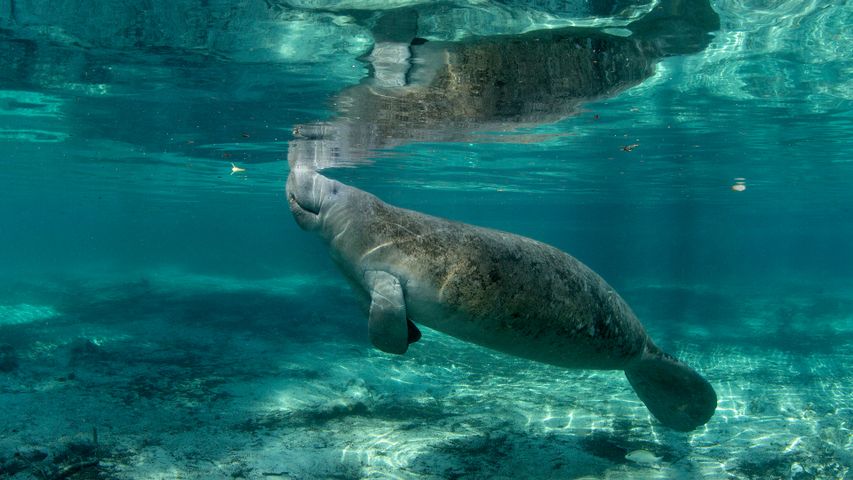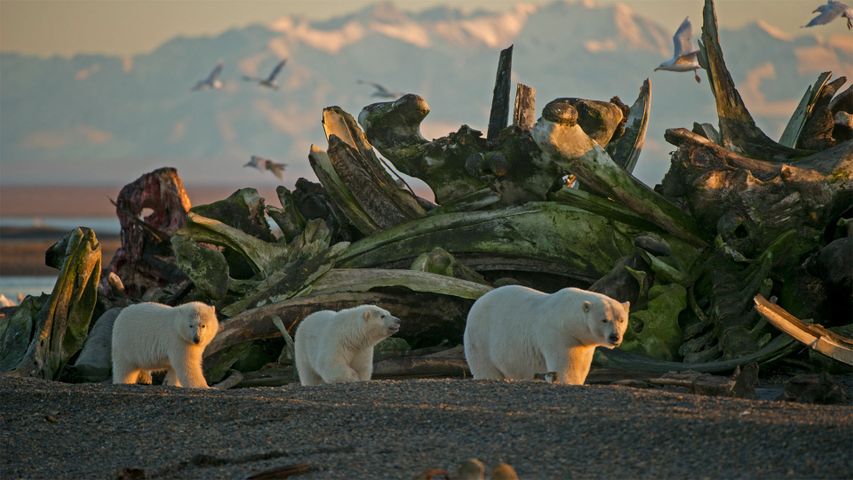Polar bear cubs playing, Kaktovik, Alaska
© Piriya Photography/Getty Image
An ice day to play. Polar bear cubs
These apex predators live and hunt on Arctic sea ice. Their prey largely consists of seals, but they have been known to eat beluga whales, reindeer and other arctic animals. The polar bears in today's image are in Kaktovik, a small Inupiat whaling community in Alaska, United States. The bears visit the village during autumn, attracted by unused remnants left on the streets by whale hunters. Polar bears exhibit remarkable mobility, traversing areas ranging from as small as 3,500 square kilometres to as expansive as 38,000 square kilometres in a year. Unlike some other bears, most polar bears remain active throughout the year. Hibernation is exclusive to pregnant females. Non-hibernating individuals maintain a regular 24-hour cycle, persisting even in conditions of continuous darkness or sunlight, although cycles shorter than a day are more prevalent during prolonged darkness.
Related Images
Bing Today Images




 Northern gannets diving for fish, Shetland Islands, Scotland
Northern gannets diving for fish, Shetland Islands, Scotland
 Steller sea lions, Vancouver Island, British Columbia, Canada
Steller sea lions, Vancouver Island, British Columbia, Canada
 Magellanic penguins, Volunteer Point, Falkland Islands
Magellanic penguins, Volunteer Point, Falkland Islands
 Atlantic spotted dolphins near Santa Maria Island, Azores, Portugal
Atlantic spotted dolphins near Santa Maria Island, Azores, Portugal
 Manatee in Crystal River, Florida, United States
Manatee in Crystal River, Florida, United States
 European river otter, Lelystad, Netherlands
European river otter, Lelystad, Netherlands
 Humpback whale mother and calf, Tonga
Humpback whale mother and calf, Tonga
 California sea lion in a forest of giant kelp, Baja California, Mexico
California sea lion in a forest of giant kelp, Baja California, Mexico


